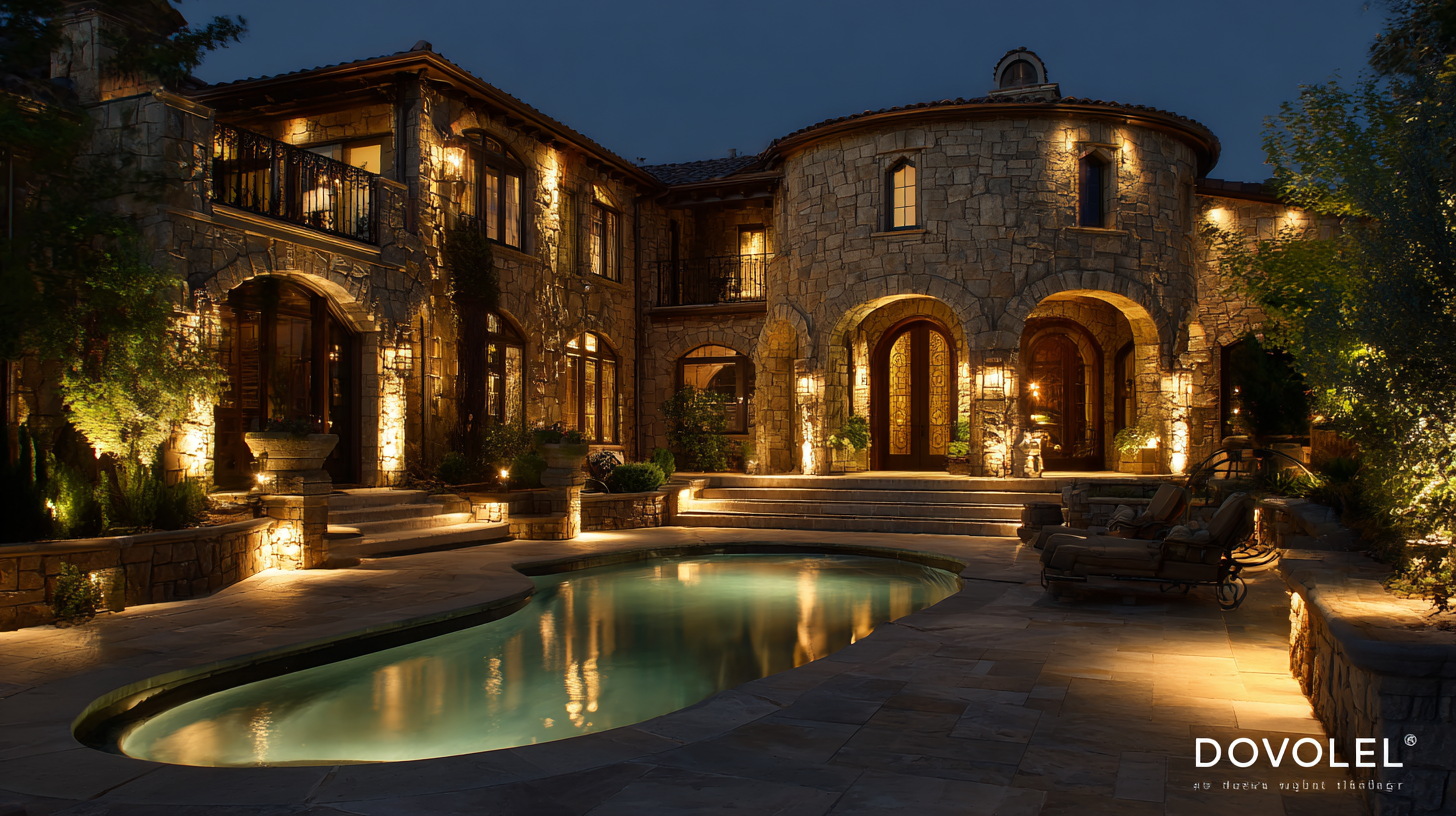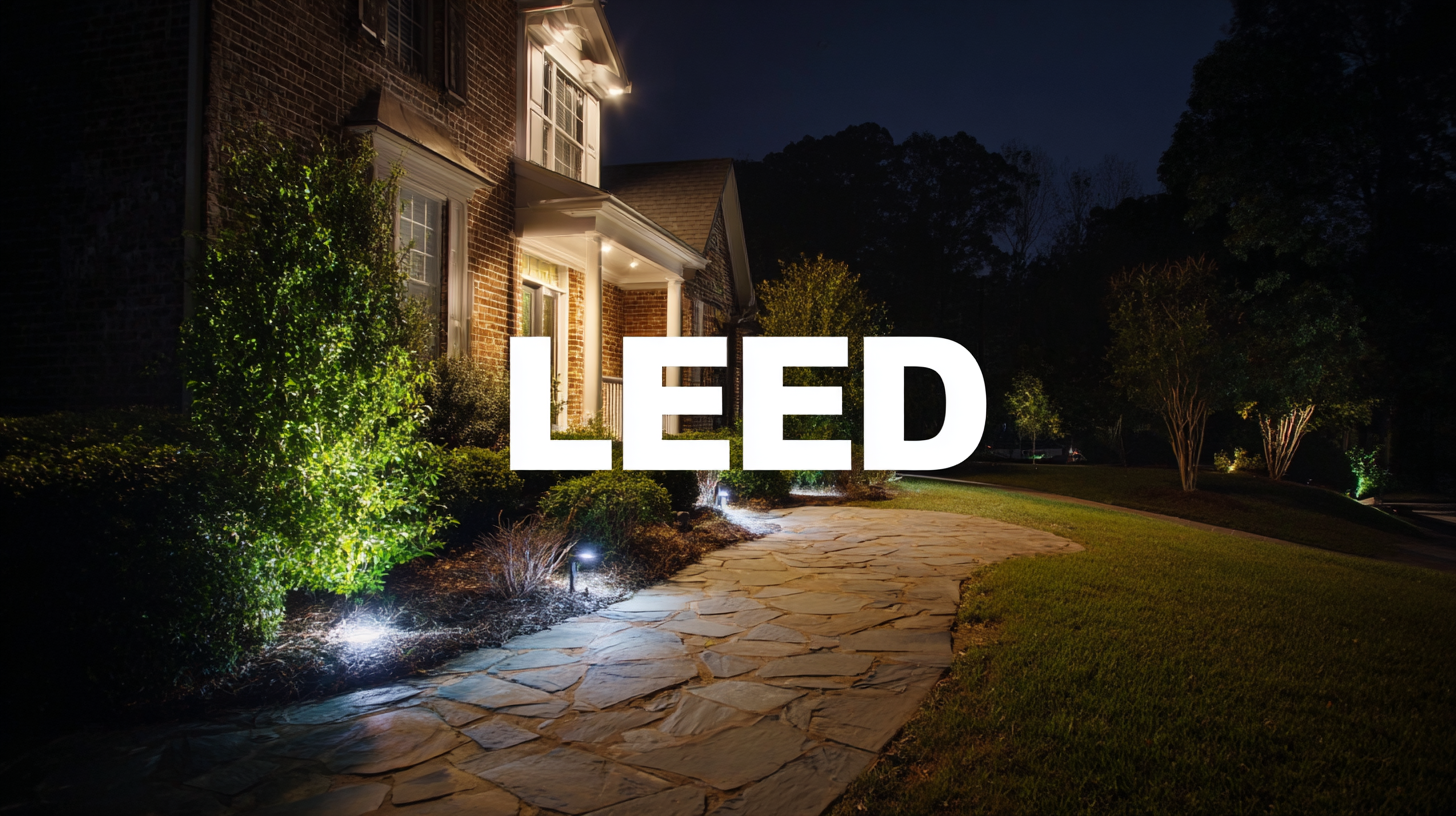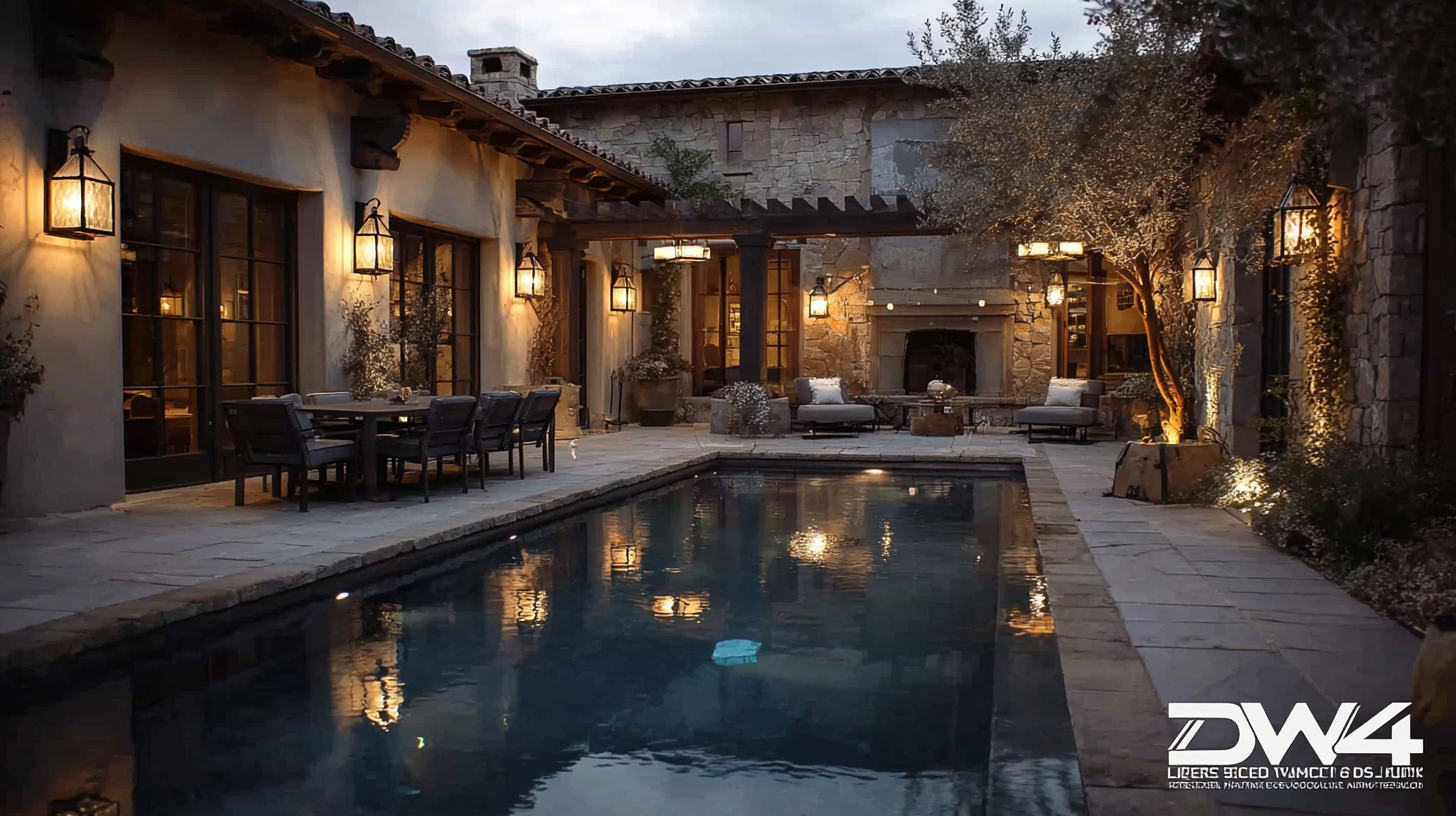Innovative Examples of Best Outdoor Led Lights Transforming Spaces with Energy Efficiency
In recent years, Outdoor LED Lights have revolutionized the way we illuminate our outdoor spaces, combining energy efficiency with innovative design. As homeowners and businesses alike seek to enhance the aesthetics and functionality of their exteriors, LED technology stands out not only for its sustainability but also for its versatility in various applications.
 From sleek wall-mounted fixtures to decorative string lights, the diverse range of outdoor LED products allows for creative transformations of gardens, pathways, and patios. This blog will explore different types of outdoor LED lights, highlighting their unique features and suitable applications, while also offering practical tips on how to effectively integrate them into your outdoor spaces.
Join us as we delve into the world of outdoor lighting and discover how these brilliant innovations can elevate your environment while saving energy.
From sleek wall-mounted fixtures to decorative string lights, the diverse range of outdoor LED products allows for creative transformations of gardens, pathways, and patios. This blog will explore different types of outdoor LED lights, highlighting their unique features and suitable applications, while also offering practical tips on how to effectively integrate them into your outdoor spaces.
Join us as we delve into the world of outdoor lighting and discover how these brilliant innovations can elevate your environment while saving energy.
Highlighting the Benefits of LED Technology for Outdoor Lighting Solutions
When it comes to outdoor lighting, LED technology has emerged as a game-changer, providing both efficiency and versatility. Unlike traditional bulbs, LEDs consume significantly less power, allowing homeowners to illuminate their outdoor spaces without incurring exorbitant energy bills. Additionally, the longer lifespan of LED lights reduces the frequency of replacements, resulting in less waste and a more sustainable approach to outdoor lighting.
Incorporating LED lights into your outdoor design can completely transform a space. From garden pathways to patios, strategically placed LED fixtures enhance the aesthetic appeal while ensuring safety. Consider using programmable LED lights to create various moods for different occasions, providing both functionality and ambiance in one go.
**Tip:** When selecting outdoor LED lights, opt for products with a high lumen output for brighter illumination without compromising on energy efficiency.
Another practical tip is to utilize solar-powered LED lights to further minimize energy costs. These fixtures harness solar energy during the day, providing you with free lighting all night long. This not only exemplifies energy efficiency but also contributes to a greener lifestyle.
Transforming Outdoor Spaces with Stylish and Functional LED Designs
In recent years, the rise of LED technology has revolutionized outdoor lighting, combining stylish aesthetics with unmatched functionality. As per a report by the Department of Energy, LED lights use at least 75% less energy than incandescent lighting, resulting in substantial cost savings and reduced environmental impact. This shift towards energy efficiency is essential not just for homeowners seeking to lower their energy bills, but also for municipalities looking to create sustainable cities.

Stylish outdoor LED designs are no longer limited to basic fixtures; they now include smart lighting solutions that enhance ambiance while optimizing energy use. For instance, integrated motion sensors and dimming capabilities allow lights to adjust based on activity levels and daylight, further improving energy efficiency. According to the International Energy Agency, if all global lighting were switched to LED, the total savings could be equivalent to the combined electricity consumption of the United States and Japan. This transformation in outdoor spaces not only provides better illumination but also enhances safety and security, making residential and commercial areas more inviting and functional. As these innovative LED solutions continue to evolve, the possibilities for creatively transforming outdoor environments grow ever more exciting.
Energy Efficiency: How LED Lights Minimize Environmental Impact
The shift towards energy-efficient LED lighting has sparked transformations across various sectors, significantly minimizing environmental impact. Research indicates that the global LED hydroponic grow lights market is projected to reach USD 4.5 billion, growing at a CAGR of 8.82% through 2032, highlighting the agricultural industry’s commitment to sustainable practices. These LED solutions not only optimize light use for plant growth but also significantly lower energy consumption, thereby reducing carbon footprint.
In the hospitality sector, integrating energy-efficient infrastructures like photovoltaic (PV) systems paired with LED lighting is proving essential. A recent analysis noted that the combination of these technologies leads to enhanced sustainability, promoting a greener brand image while simultaneously cutting operating costs. The lighting shift is paramount, with LED technology providing an easy-to-implement solution for hotels aiming to decrease their environmental burdens.
Furthermore, cities are adopting smart lighting technologies as part of their sustainable growth initiatives, aiming for a future where energy-efficient solutions illuminate urban spaces. By 2050, such advances in connected lighting will be critical to reducing urban carbon emissions, reinforcing the essential role that energy-efficient lighting technologies play in creating a more sustainable built environment.

Case Studies: Success Stories of LED Lighting Transformations Worldwide
Across the globe, innovative implementations of outdoor LED lighting have significantly transformed public and private spaces, enhancing both aesthetics and energy efficiency. One standout case is in Sydney, Australia, where the city revitalized public parks with solar-powered LED fixtures. This not only reduced energy costs but also created a safer environment for evening visitors. The new lighting scheme, which blends seamlessly with the natural surroundings, has led to increased foot traffic, encouraging community engagement and nighttime activities, ultimately fostering a vibrant social atmosphere.
Another notable example comes from Copenhagen, Denmark, where the city council integrated smart LED streetlights that adjust brightness based on pedestrian presence. This forward-thinking approach not only conserves energy but also enhances safety by ensuring well-lit paths for walkers while minimizing light pollution during quieter times. The project has significantly lowered energy consumption, demonstrating that thoughtful design in urban planning can lead to both environmental benefits and improved quality of life for residents. These success stories illustrate the profound impact that LED lighting can have, serving as a catalyst for change in urban landscapes worldwide.
Impact of LED Lighting on Energy Consumption in Outdoor Spaces
The Future of Outdoor Lighting: Trends in LED Innovation and Sustainability
As outdoor lighting technology continues to evolve, LED innovations are leading the way toward a more sustainable future. The current trends in outdoor lighting not only focus on aesthetics but also emphasize energy efficiency and environmental impact. Smart LEDs, which can be controlled remotely and adjusted based on ambient light levels, are becoming increasingly popular. These advancements not only save energy but also provide homeowners with the flexibility to tailor their outdoor ambiance according to their needs.
When choosing outdoor LED lights, consider the importance of proper placement and timing. Tips for maximizing efficiency include installing motion sensors to ensure lights only operate when needed and using timers to control lighting through the night. Additionally, selecting warm-white LEDs can enhance outdoor spaces while reducing light pollution, ensuring a gentle glow that is kinder to the environment.
Another trend is the integration of solar-powered LED fixtures, which harness energy from the sun to illuminate spaces after dark. This sustainable approach removes reliance on grid electricity and can significantly lower energy costs. To fully benefit from this technology, ensure your solar lights are positioned where they receive ample sunlight during the day, and clean the panels regularly to keep them efficient.
